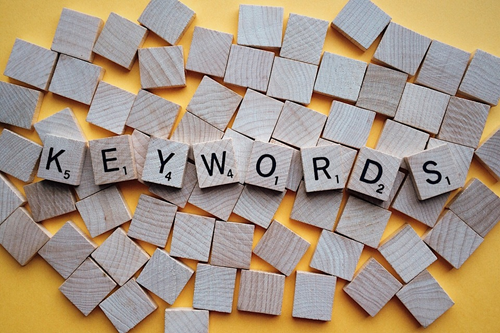- Online Advertising
- 09.26.2018
Bonsai’s Best Practices for PPC to Landing Page Strategy
If you’ve been advertising online in the last 10 years, or you’re just starting, you’ve likely heard the phrase landing page optimization being used by your SEM experts. Having a great landing page experience will [notice we didn’t say can or might] make or break your Pay Per Click campaigns. It’s the foundation for most PPC advertising and industry leaders tend to focus on it heavily. But when considering advertising on Google Ads, landing page optimization needs to provide more than just a beautifully designed website.
In order to succeed in the digital marketplace, your landing page needs to reflect your PPC campaign and vice versa, it needs synergy.How do you get synergy between your website and your online advertising? Well, there are multiple options one can pursue for their website or PPC campaign in order to get the best performance but before we get into that let’s review how Google evaluates a successful keyword to landing page experience.
Quality Score


The metric Google uses to evaluate whether or not a keyword and landing page has synergy is Quality Score. There are several factors that are used to determine quality score such as:
- Expected Clickthrough rate(CTR) - Google’s prediction on how likely a keyword will lead to a click on your ads. It factors in the historical performance of the keyword based on your ad’s position when someone’s search triggers one of your ads.
- Ad Relevance - How closely your ad matches the intent behind a user’s search. This metric determines whether or not the keyword you’re paying for is relevant to the ad copy it’s associated with. Having an average or above average status means your keyword matches the ad copy. Below average, then your keyword needs new ad copy or you need a different keyword.
Landing Page Experience - This is how Google estimates how relevant and useful your website’s landing page will be to the users. Higher ranking landing pages are well organized and have text related to the person's search terms.
Now how does this relate to PPC landing page optimization? It’s a combination of these elements that we can influence in different ways to get the same result: synergy between our Google Ads advertising and website. We will break down some simple optimization strategies to make this synergy happen.
Aligning Landing Page To Ad Copy

One of the biggest mistakes advertiser’s make is creating a competitive advantage or promotion in their ad copy and failing to deliver that same language on the landing page.
For example, An ad displays a specific “buy one, get one free” promotion for your product. When the user sees (and clicks) your ad they are expecting that promotion to be on the landing page. Updating ad copy on the PPC side is easy and when advertisers want to change the brand language or make special offers it’s the first place they make the change.
But not updating your landing page content to match your ad copy is one of the factors that create a poor landing page experience. If a user comes to your site and the ad that brought them there doesn’t match the intentions set by the ad copy, then the user leaves. Giving the advertiser no conversions and a wasted click.
Use PPC Keywords As Fuel For Landing Page Content

Similar to aligning the landing page to ad copy, the keywords advertisers are paying for and users are searching need to be found on the landing page. Say you are a user in need of an emergency plumber at 2:00 a.m., the first ad you click on has the keyword in the ad copy and the landing page takes you to a plumber’s website but 'emergency plumber' is nowhere to be found. In most cases, the user will simply bounce back to the results and click on a different ad.
Why waste time contacting the business in an emergency if there is some uncertainty? We have multiple ads to click on and one of those landing page experience will have what we are looking for. This is why it’s important to either have your PPC keywords providing content for your landing pages or vice versa. Simply put, don’t advertise what you’re not selling.
This is a big factor Google considers when determining Ad Relevance and Landing Page Experience. If both of these are “below average” than the keyword will trigger less frequently in searches and have a higher cost, reducing your return on ad spend for your campaign. Want to advertise with a new keyword relevant to your business? Make sure you have the landing page and content made for it.
Determining Landing Page Goals

What is the goal of your website? Is it to generate subscriptions, sale your product, or highlight your services? Determining what your landing page goals are, what you want the user to do, is one of the most critical factors for PPC to landing page strategy. If form fill applications are what you consider a successful conversion, then the form fill needs to be on the landing page.
Users have already made their intent by the search they entered and the ad they clicked. The final step is simply converting. The option to convert should be constantly available to the user. Having the user’s convert on other pages creates less engagement and interest in what the advertiser is providing. Whether that is a form fill on the front page or a buy now option, user’s are more likely to convert compared to a multi-page journey.
Building Landing Page Trust

This is is more of a no-brainer for most advertisers but something it does get missed occasionally. If you have followed the advice provided above, your landing page should have an experience that builds a lot of trust with the user. That being said, there’s always more you can do. Things that should be prevalent (at least included) on a landing page are reviews, social links, contact information, etc.
This also has the added benefit of creating content for your landing page, improving the experience for the user. In some cases, these additions can contrast the theme or style of an advertiser’s website but it’s still recommended to have some form of social links and contact information.
Your PPC to Landing Page strategy should follow a connected path that reflects a user’s search intention. Essentially the keywords should be found in the ad copy and the ad copy should be found on the website. Once the user gets to the landing page the goals should be transparent and relevant. All these factors together create a linear path from a user’s intent to their final conversion actions, converting visitors into leads.